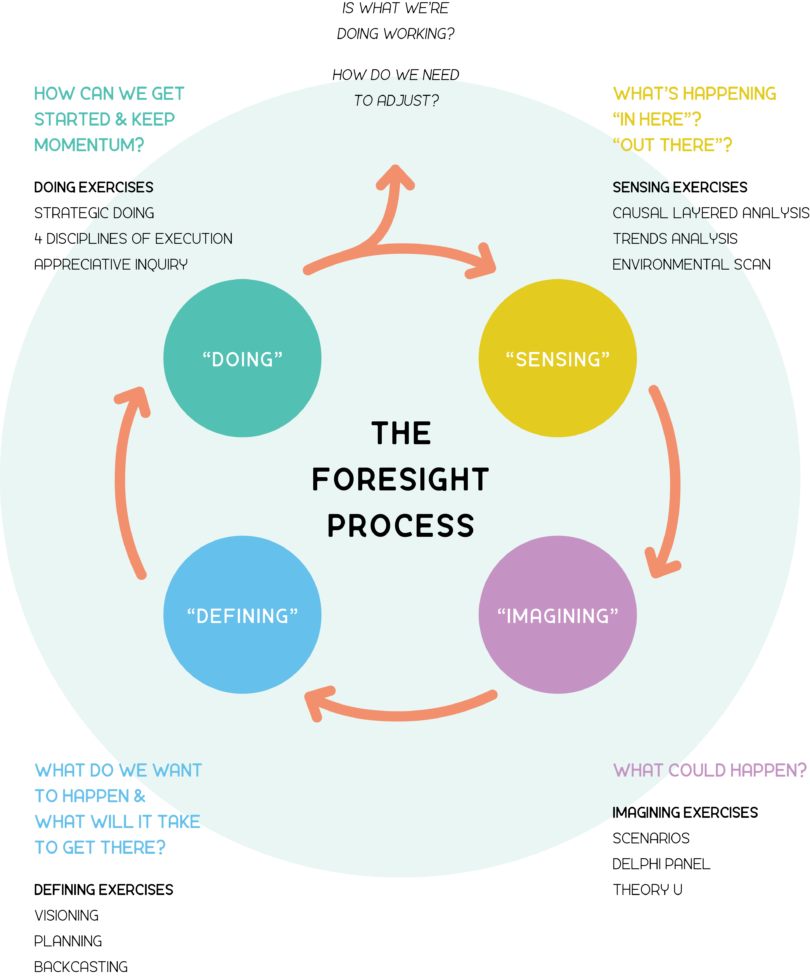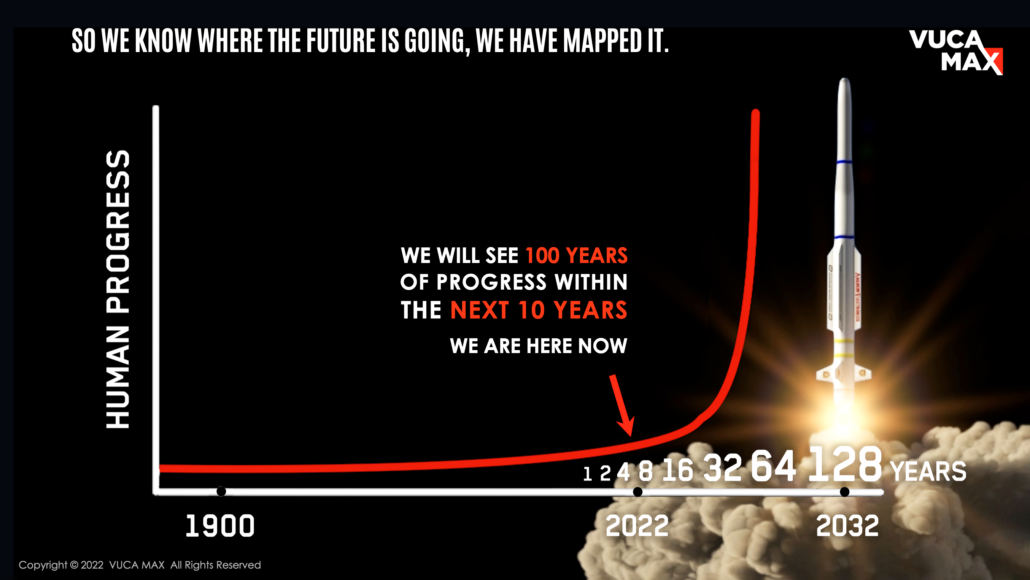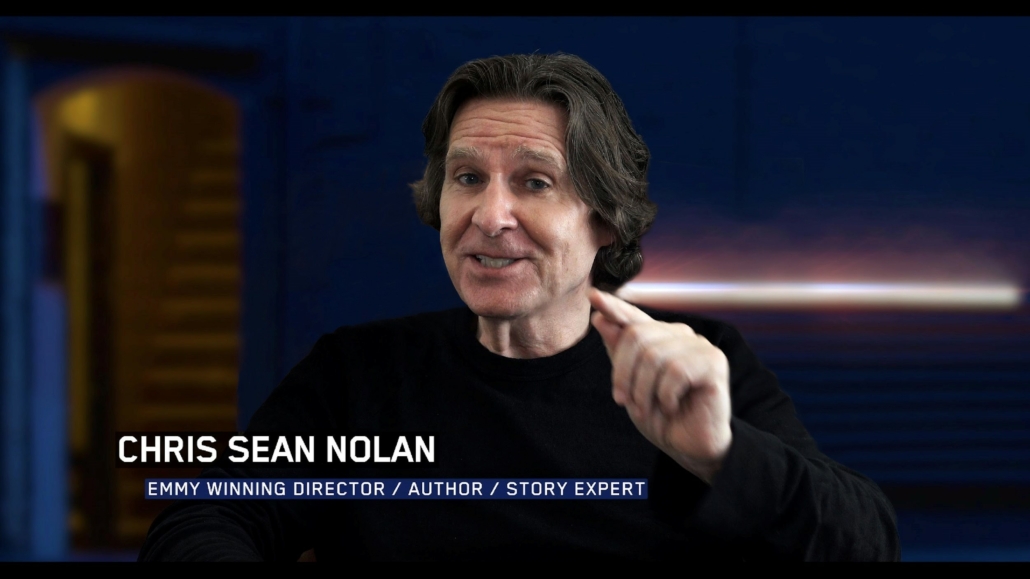Opportunity in Uncertainty
Dr. Ciela Hartonov. futurist, organizational psychologist, human behavior expert, writer, and thinker dedicated to reinventing work provided this article as a companion piece to her podcast Opportunity in Uncertainty.
Lessons on leadership in the wake of crisis
In the 17th century, the Great Plague of London sent Isaac Newton, then in his 20s, home from Trinity College in Cambridge back to the family estate. He stayed home for more than a year, doing some of his best work in mathematics and the study of gravity. He took the moment of pause to advance his profound and groundbreaking work. If Newton’s moment of reflection produced such genius then — given what we’re seeing in our own uncertain times — who knows what we can reimagine? How might we take this moment to see something anew?
I’ve been taking my own pause to look at how the COVID-19 pandemic has shone a spotlight on different leadership styles in ways no one, I believe, could have anticipated. The crisis will turn out to be one of the greatest change agents in our lifetime, giving us license to re-examine several aspects of the way we live, treat one another, and build flourishing businesses and communities.
In the past few weeks we’ve seen leaders rising up who give clues to what leadership traits we may want to embrace in our very near future: Jacinda Ardern with her empathy-driven clarity, Angela Merkel with her science-backed responsiveness. What do all these leaders have in common? They balance crisis management with a deep resonance for the human experience inside the trauma. They are demonstrating, in a word, sensitivity. Not just the emotional equity that is usually associated (and often disparaged) with this term, but the deeper ability to adapt and respond.
Professor Klaus Schwab, Founder and Executive Chairman of the World Economic Forum says, “We need leaders who are emotionally intelligent, and able to model and champion co-operative working. They’ll coach, rather than command; they’ll be driven by empathy, not ego.” I couldn’t agree more.
We can thrive in uncertainty if we learn to embrace sensitive leadership. Sensitive leadership is the practice of building capacity for responsive action, by using the ability to attune to the nuances of a situation. Leaders with acute perceptual skills (including emotion detection) are the ones who are better equipped to manage through unexpected shifts.
Let’s return to Jacinda Ardern, who has received much press and praise and is a model of sensitive leadership. After the 2019 Christchurch shootings in New Zealand, the public went into a state of shock and uncertainty. Ardern responded with a radical combination of emotional empathy and direct action to an event that was unprecedented but nonetheless required leadership response. As Harvard historian Nancy Koehn stated: “Here is a leader who’s very conscious of both the emotional responsibilities of a leader — to help a nation heal and come together — and at the same time [saying], ‘I’ve got to act.” At this moment, there was no playbook, but Ardern detected what was necessary and took sensitive action.
The Value of Sensitive Leadership
Sensitive leaders understand that trying to control organizations, people or external forces is futile. They move away from a mindset of hierarchy and control to one of embracing the true nature of organization and human systems: they are made of interconnected, interdependent pieces that are always adjusting and adapting. As the saying goes, the sum is greater than the parts.
Our current times are thankfully helping us rediscover this interconnection; when we stay home, we protect others from infection. Our actions have an immediate impact on others. We are remembering that we must not act as individualists, because our fates are linked. Even when it is not blatantly observable, these interconnections are undeniable, both in organizations and society at large.
This is partly due to our biology. We have something called mirror neurons, which allow us to imitate others, reflecting others’ body language and emotions. Mirror neurons are the invisible tissue that are essential for building connections for social life. Part of the reason isolation is so difficult is that we are physically linked to one another. This moment presents the possibility that interconnectedness may not just be a necessity, but may even be our unique human advantage.
According to Yuval Noah Harari, a historian and the author of Sapiens, our species’ ability to adapt more successfully than others is due to our skill in leveraging human interconnection for cooperation. Sensitive leaders accept that this necessary reliance is not a deficit but an organizational truth. It is what can lead to outsized innovations and deep emotional connection at work, where we spend so much of our waking lives. Human wiring grants us the ability to band together, to make sense together, and to create progress.
However, our current organizational systems and traditional leadership practices are not designed to accept, let alone leverage co-creation. Sensitive leaders realize that organizations built on the industrial era tools of hierarchy, goal setting, and efficiency are reaching the end of their utility. This is because the world is increasingly unpredictable and complex. Never has this been more painfully obvious than now.
We are learning that the world works beyond direct cause and effect. A focus on binary ways of thinking — right, wrong; yes, no — have left us struggling to cope with a new reality, one where more unexpected challenges are likely to come. An ever-emerging environment requires increased awareness, consciousness, and cooperative action. These situations call for sensitive leaders: those who can nudge, who are comfortable following non-linear paths, who can make decisions in the absence of clear facts, and who can leverage interconnections to cooperate.
For those of us (leaders or otherwise) who have been told (and who hasn’t?) that sensitivity is a deficiency, this may come as a surprising invitation. The truth is that sensitivity has been associated with irrationality and over emotionality for far too long. Sensitivity can provide us with so much more than empathy. It allows us to more deeply understand a situation and to respond with care and decisiveness. In fact, original references to sensitivity from the 13th Century defined it as the capacity to gain perspectives. It is not a deficit, but rather a unique human super power.
COVID-19 has taught us that we can no longer ignore the presence and power of the unexpected, complex and interconnected. As technological conditions, climate change and interconnected forces are multiplying, we urgently need more sensitive leaders.
How to Build Sensitive Leadership Skills
Leaders can build sensitivity skills by developing the capacity to sense, reflect and respond. Based on my years in the leadership development field, I believe that cultivating and expanding sense-reflect-respond capacities is now the single most important obligation of leadership. Based on the science of managing complex environments, forcing a space between thought and action allows us to see fresh perspectives and ways forward. Practiced over time, we learn to attune to elusive dynamics and subtle clues in unfamiliar territory, to ask new questions to unlock possibility, and to make choices even in the absence of a “right” way.
Here is how the three steps work:
Sense: The first step is absolutely critical and often overlooked. This is the ability to notice weak signals. It may sound simple or trite, but when the world is moving fast and attention is scarce, we often ignore the small signs. In attention-hogging environments, leaders have to work harder to sense evolving dynamics. A sensitive leader notices changes in the environment, reacting to sights, sounds, and smells when others may not. They tune into subtleties with more frequency.
By looking at what is happening within individual thought patterns and also what is going on contextually in the environment, they are able to cue into the need for change before being forced into it by catalytic circumstances. The more we notice and examine, the more able we are to deepen our understanding and create more choices for action. This practice of noticing builds the foundation of sensitive leadership.
Reflect: This is the spot between noticing and action. It creates the necessary liminal space to determine next steps. Highly sensitive individuals process information deeply, which requires reflection and deep questioning. Asking ourselves different questions can reshape how we think.
In the emergent era, one cannot lead unless they are wise, and wisdom comes from integrating across multiple intelligences (rational, emotional, social). Practicing reframing helps us see something in a new light and disrupt our default solutions, coming up with new and creative solutions.
Respond: Responsiveness means altering behavior in the face of changes to the environment. This is not just action-planning; it is about being versatile. Responsive leaders evolve alongside the changing conditions around them and take action in face of uncertainty. We can see new possibilities for action when we break free from the chains of habitual thinking. Leaders who take action while accounting for multiple truths and stories are at once more inclusive and equipped for the future ahead.
This cycle of sense-process-respond can happen rapidly and it must be on repeat. Since the 1990s, brain researchers have come to realize that the brain — even the adult brain — is far more adaptable than anyone ever imagined, and this gives us a tremendous amount of control over what our brains are able to do. We now understand that there’s no such thing as a predefined ability. The brain is adaptable, and training can create skills that did not exist before. We can embolden our powers of sensitivity.
COVID-19 has reminded us, with shocking clarity, that our life and time on this earth are precious. It is neither infinite nor guaranteed. The dangers of today call us to move past complacency and focus on what matters most. We now have the opportunity to quickly prune away the normalized leadership practices that no longer serve us. Let’s take this moment to reimagine what types of leaders we want to follow: leaders who role model sensitive leadership, building the strength to embrace their own senses decisively, and allowing others to do the same.
Maybe this time will give us enough pause, just as it did for Newton, to have a breakthrough. Maybe we can reinvent our relationship to sensitivity — this long overlooked, deeply human, powerful trait.
Enhancing our innate human capacity for sensitivity is a way forward to ensure that our organizations, societies and communities are malleable, emergent and adaptive. We each can take the call to tune into our sensitive nature, so that life both inside and outside of the organization becomes more whole and humane.
ABOUT THE AUTHOR:
Dr. Ciela Hartanov is a futurist, organizational psychologist, human behavior expert, writer, and thinker dedicated to reinventing work. She helps leaders create a revolution inside the modern workplace, one aimed at breaking a system that promotes work practices that have existed since the industrial era. She was part of the founding team of The Google School for Leaders and Head of Next Practice Innovation and Strategy at Google, where she developed projects designed to shape the future of leadership and work. She currently runs humcollective, a boutique strategy and innovation firm that helps companies, executives, and teams make sense of the forces shaping the future and prepare strategically.
RESOURCES:
Ready to measure your leadership skills? Complete your complimentary assessment through the Innovative Leadership Institute. Learn the 7 leadership skills required to succeed during disruption and innovation.
- Follow the Innovative Leadership Institute LinkedIn page
- Subscribe to Innovating Leadership and listen on your favorite podcast platform
Additional Resources offered by our trusted colleagues and partners
In partnership with the Innovative Leadership Institute, James Madison University will begin The Innovative Leadership Certificate Program on November 1st. The program prepares participants to understand their vision, values, and strengths as leaders and is a very valuable program for working professionals ready for promotion. To learn more and register, click here.
Check out the companion interview and past episodes of Innovating Leadership, Co-creating Our Future via iTunes, TuneIn, Stitcher, Spotify, Amazon Music, Audible, iHeartRADIO, and NPR One. Also, stay up-to-date on new shows by following the Innovative Leadership Institute on LinkedIn.
Photo by Marco Bianchetti on Unsplash



